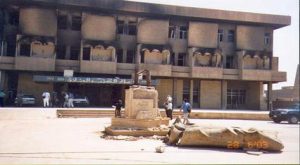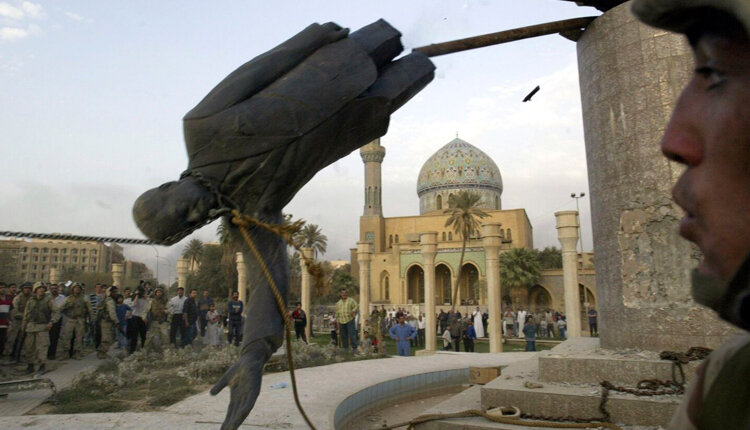The 9th of April marks the 20th year since the Fall of Baghdad in 2003. The Fall of Baghdad marks a huge turning point in Iraqi history that will forever be remembered.
The invasion led to the death of a huge number of Iraqi citizens, with a count of around 2,320 in a period of 6 days.
The US forces entered the City of Kirkuk in April 10 and the city of Tikrit in April 15.
The 9th of April witnessed one of the most known and iconic moments of the invasion, the toppling of the Saddam Hussein Statue in Firdos Square.
On the 11th of April, the US troops entered the Iraq National Museum and heisted its content.
From the 10th of April to the 13th, the US forces burned and looted The National Library and Archive, which was founded in Baghdad and was founded in 1920.

The fires were set professionally with accelerants to help make sure that the Library was destroyed completely.
The library included 417,000 books and 2,618 periodicals dating from the late Ottoman Empire to modern days. It also included a collection of around 4,400 rare books and manuscripts.
The US army had a mission of targeting, burning, stealing, and destroying the Iraqi culture and legacy.
The US forces invaded Iraq with the excuse that Iraq is importing uranium and can be a threat to the world peace. However, on the 7th of July, George W. Bush, the US President at the time, admitted that there is no proof that the Iraqi government took steps in importing or producing uranium.
Shortly after Bush admitted that the Iraqi government was not involved in the production of uranium, the US troops killed Uday Hussein and Qusay Hussein, Saddam’s sons.
Moreover, in December, the US troops captured Saddam Hussein and set him for trial. He was executed by hanging on the 30th of December 2006.
In June 2004, the US Investigative Committee stated that there is no proof that the Iraqi government was behind the 9/11 terrorist attacks.



